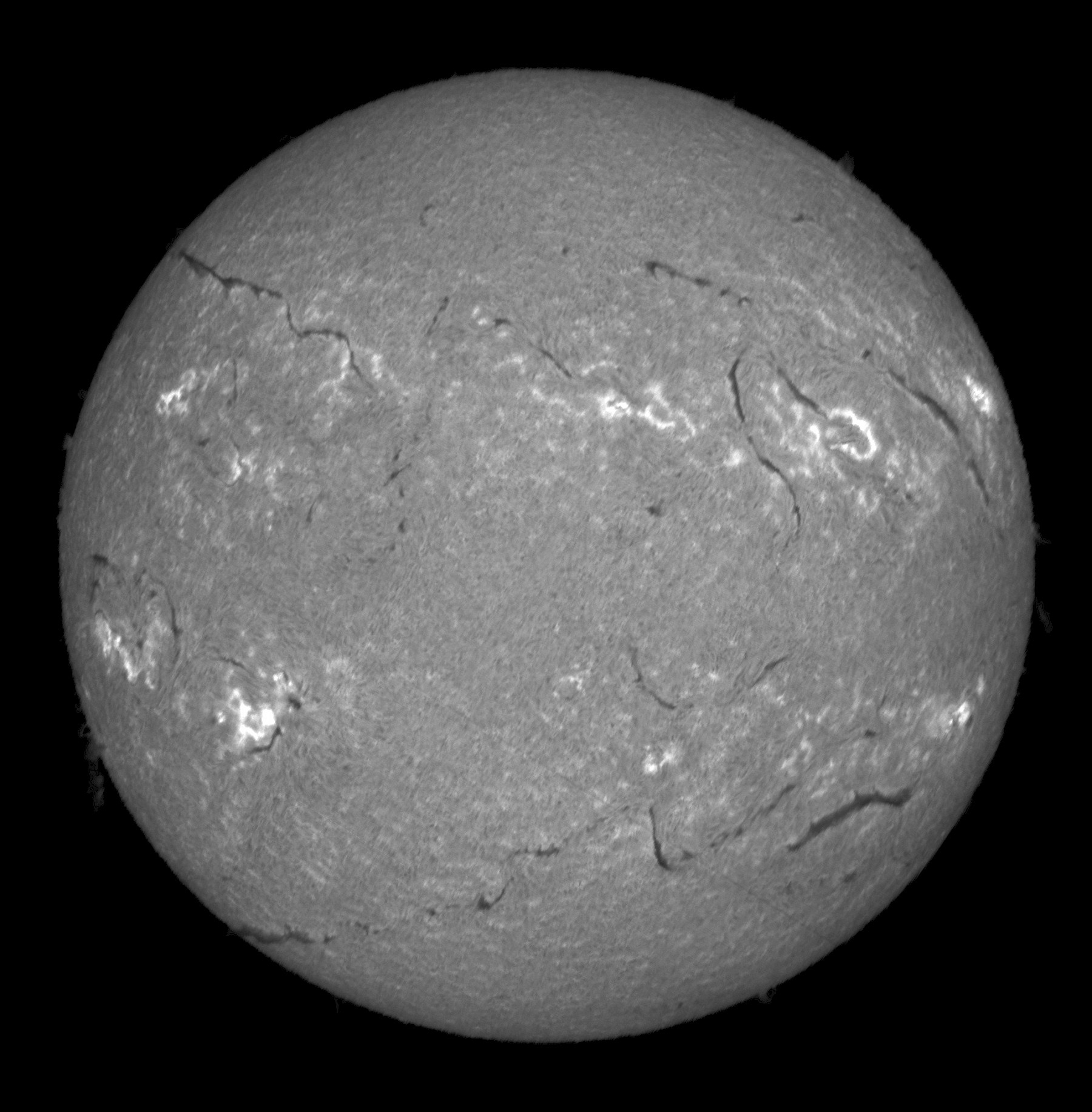Auroras
The Sun has a magnetic activity cycle of around eleven years, which results in structures such as coronal holes and sunspots or phenomena such as solar flares and coronal ejections. Some of the energetic charged particles coming from coronal holes and coronal ejections, forming real plasma clouds, intercept our planet and interact with its magnetic field. Depending on the characteristics of these clouds, particularly their speed and the orientation of their magnetic field, the energetic particles can be captured by our planet, giving rise to magnetic storms.
These charged particles move along the Earth's magnetic field, eventually falling into regions around the magnetic poles, the auroral ovals, in which the magnetic field erupts onto the Earth's surface. The collision of solar particles with gases in the Earth's atmosphere results in the excitation of atmospheric atoms and molecules. Their return to their previous state leads to the emission of radiation with energies (colors) characteristic of the different excited levels, thus giving rise to the auroras, called boreal when they occur in the northern hemisphere and austral when observed in the southern hemisphere.
Auroras are not a phenomenon exclusive to our planet. Both the gas giant planets (e.g. Jupiter and Saturn) and Venus and Mars (planets without a global magnetic field) have auroras. Nor is this a phenomenon exclusive to the solar system: numerical simulations suggest that hot Jupiters (exoplanets similar in size to Jupiter orbiting very close to their stars) may have auroras whose brightness is 100 to 1000 times that of terrestrial auroras.
The color of the auroras depends on the chemical species with which the solar particles have interacted: molecular nitrogen gives rise to bluish auroras, while oxygen atoms are responsible for the green color of the auroras. In the upper layers of the ionosphere, oxygen gives rise to reddish auroras.
More intense magnetic storms, in which there is a greater weakening of the Earth's magnetic field, lead to a greater widening of the auroral oval, making it possible to observe auroras at lower latitudes. This was the case with the Carrigton storm (September 1, 1859), during which auroras were observed in such unusual places as Cuba and Panama.
As we approach the maximum of the current solar activity cycle (cycle number 25, counted from 1755), expected later this year, the frequency of geomagnetic storms and the resulting auroras will increase.
Data from the Geophysical and Astronomical Observatory of the University of Coimbra has been used by lecturers and researchers at the University of Coimbra to monitor solar and geomagnetic activity and study its impact on society.


